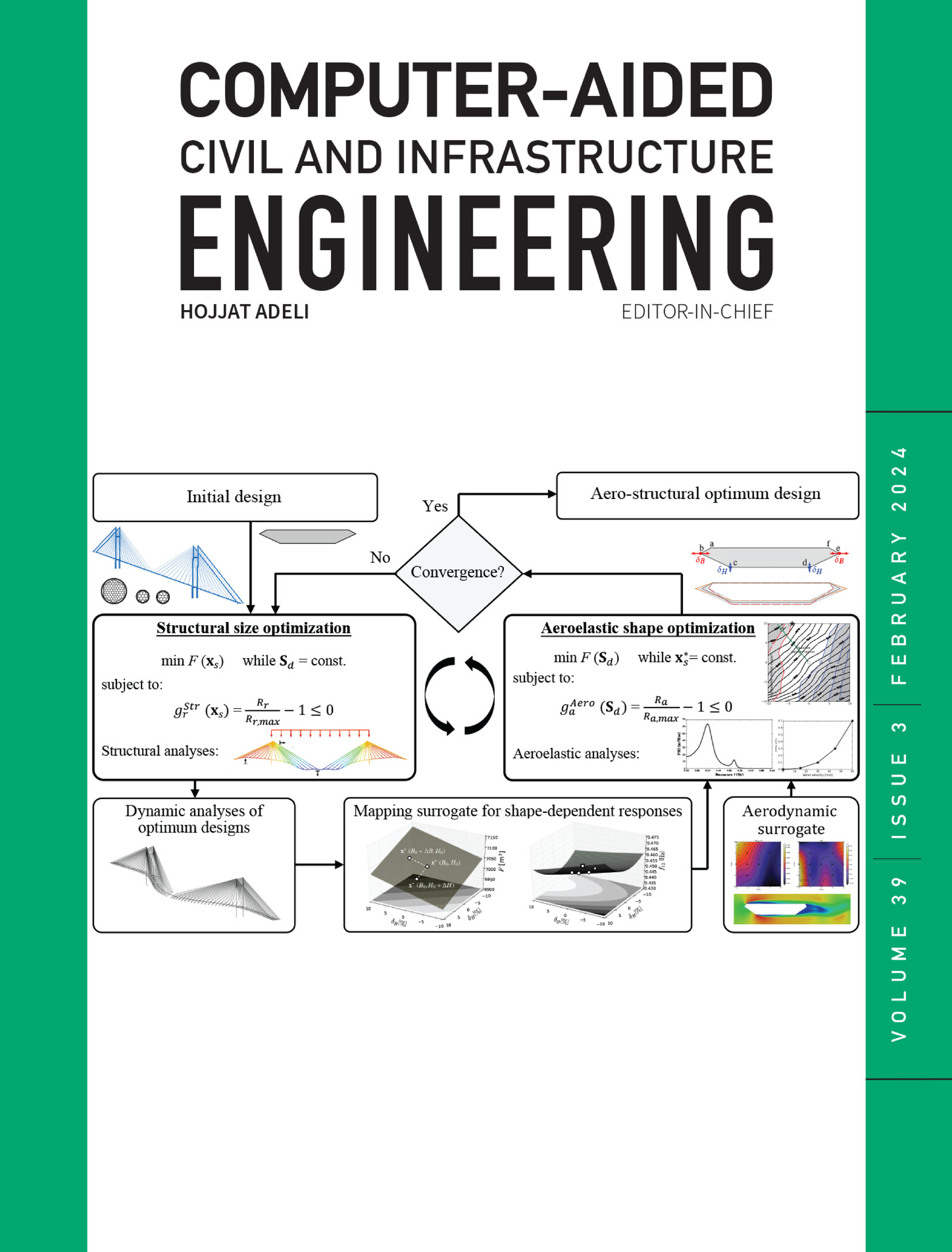Deep line segment detection for concrete pavement distress assessment
IF 8.5
1区 工程技术
Q1 COMPUTER SCIENCE, INTERDISCIPLINARY APPLICATIONS
引用次数: 0
Abstract
This study proposes a deep line segment detection model named DLSD, for identifying four ubiquitous line segments on concrete pavements: joint, sealed joint, bridge expansion joint, and roadway boundary. DLSD associates a category with the triple-point representation to encode a line segment. Its network employs a localization head and a classification head, attaching several auxiliary branches to integrate the line segment shape context. A novel dual-attention mechanism further improves the line segment classification. From experiments, the structural average precision (sAP) and mean sAP of the DLSD model on class-agnostic and class-aware line segment detection achieve 85.0% and 73.4%, respectively. The former outperforms the existing best-performed method by 2.7%, and the latter sets a state-of-the-art performance. An automated pipeline combines the line segments with cracks to detect corner break and shattered slab on concrete pavements for an accurate distress assessment, reducing the error rate of distress ratio value from 38.7% to 11.5%.求助全文
约1分钟内获得全文
求助全文
来源期刊
CiteScore
17.60
自引率
19.80%
发文量
146
审稿时长
1 months
期刊介绍:
Computer-Aided Civil and Infrastructure Engineering stands as a scholarly, peer-reviewed archival journal, serving as a vital link between advancements in computer technology and civil and infrastructure engineering. The journal serves as a distinctive platform for the publication of original articles, spotlighting novel computational techniques and inventive applications of computers. Specifically, it concentrates on recent progress in computer and information technologies, fostering the development and application of emerging computing paradigms.
Encompassing a broad scope, the journal addresses bridge, construction, environmental, highway, geotechnical, structural, transportation, and water resources engineering. It extends its reach to the management of infrastructure systems, covering domains such as highways, bridges, pavements, airports, and utilities. The journal delves into areas like artificial intelligence, cognitive modeling, concurrent engineering, database management, distributed computing, evolutionary computing, fuzzy logic, genetic algorithms, geometric modeling, internet-based technologies, knowledge discovery and engineering, machine learning, mobile computing, multimedia technologies, networking, neural network computing, optimization and search, parallel processing, robotics, smart structures, software engineering, virtual reality, and visualization techniques.

 求助内容:
求助内容: 应助结果提醒方式:
应助结果提醒方式:


